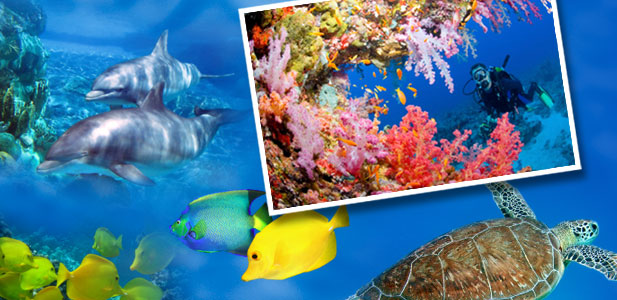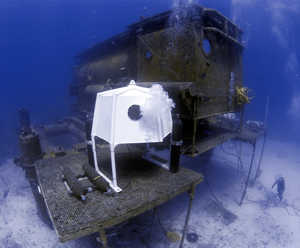First "Teachers Under the Sea" Bring Marine Science
to the Classroom

High school teachers Mark Tohulka of Miami, Fla., and Stephen Houwen of Longmont, Colo., will have an unusual experience this fall when they take part in the 100th mission to NOAA’s Aquarius Reef Base, becoming the first teachers to live and work from the world’s only permanent undersea laboratory.


After training to live 60 feet below the sea-surface for 10 days, the teachers will join a team of two habitat technicians and three science aquanauts led by James Lindholm, assistant professor of Marine Science and Policy at California State University-Monterey Bay. By studying fish movements at Conch Reef, the team hopes to better understand the habitat and spatial scale needs for marine reserves.
While assisting with research, the teachers will participate in live on-line communications from the Aquarius undersea habitat that include three live and archived broadcasts, blogs, video conferencing with classrooms, and interacting online with the public.
“Teachers Under the Sea provides an exceptional inner-space experience to teach from the ocean floor via the Internet,” said Richard Spinrad, NOAA assistant administrator for oceanic and atmospheric research. "Aquarius brings the experience of living and working underwater to classrooms around the world, and encourages students to become interested in marine biology and oceanographic studies.”
Aquarius, located within the Florida Keys National Marine Sanctuary, is owned by NOAA and operated out of Key Largo, Fla., by the University of North Carolina Wilmington allows scientists to live and work underwater 24/7 during one to two week missions. This unique capability enables them to conduct research, surveys, or undertakeexperiments that would be difficult, if not cost and time prohibitive, if diving from the surface.
For this “Teachers Under the Sea” mission, Tohulka will be the on-board aquanaut. Houwen will serve as the alternate aquanaut and will be part of the surface-based science team at the Aquarius base station located in Key Largo, Fla.
With 23 years of teaching experience, Tohulka teaches grades 10 through 12 honors marine biology, grade 9 biology, and grades 11 through 12 Marine Research at the Maritime and Science Technology Academy High School in Miami.
His awards include the Presidential Award for Excellence in Science Teaching, Milken Foundation National Educator Award, Dade County Science Teacher of the Year, and the Target National Teacher Award. He has extensive diving experience and numerous certifications, including advanced open water rescue and nitrox used for extended dive times. He has designed classroom activities for students about undersea habitats and been involved in several marine research projects requiring fieldwork.
Houwen teaches grades 10 through 12 in advanced placement biology and honors marine biology, along with anatomy and physiology. He has 26 years of experience and teaches at Alameda High School in Longmont, Colo.
He has been listed twice amongst the Who’s Who Among American High School Teachers and has logged more than 200 dives and holds a current advanced open water certification. Houwen has conducted numerous field expeditions with his students, has been a speaker at the Colorado Science Teacher’s Convention, and has worked to implement real-time data use into his classroom.
Funding for the “Teachers Under the Sea” mission is being provided by grants to UNCW from Fish Florida, the Guy Harvey Foundation, Wal-Mart, and NOAA.
NOAA understands and predicts changes in the Earth's environment, from the depths of the ocean to the surface of the sun, and conserves and manages our coastal and marine resources.
Media Contact: Daniel Parry, 301-734-1092

